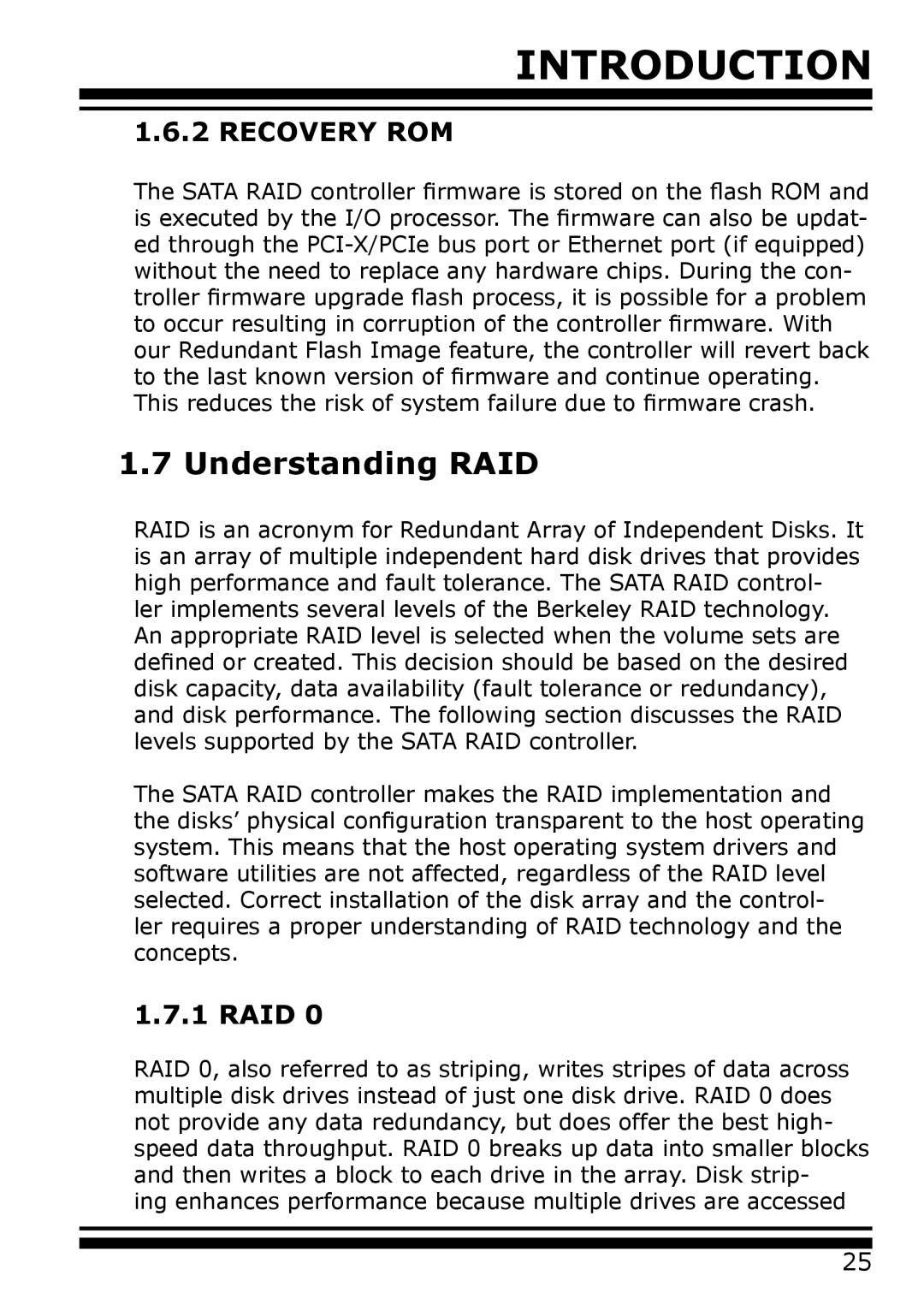
INTRODUCTION
1.6.2 RECOVERY ROM
The SATA RAID controller firmware is stored on the flash ROM and is executed by the I/O processor. The firmware can also be updat- ed through the
1.7 Understanding RAID
RAID is an acronym for Redundant Array of Independent Disks. It is an array of multiple independent hard disk drives that provides high performance and fault tolerance. The SATA RAID control- ler implements several levels of the Berkeley RAID technology. An appropriate RAID level is selected when the volume sets are defined or created. This decision should be based on the desired disk capacity, data availability (fault tolerance or redundancy), and disk performance. The following section discusses the RAID levels supported by the SATA RAID controller.
The SATA RAID controller makes the RAID implementation and the disks’ physical configuration transparent to the host operating system. This means that the host operating system drivers and software utilities are not affected, regardless of the RAID level selected. Correct installation of the disk array and the control- ler requires a proper understanding of RAID technology and the concepts.
1.7.1 RAID 0
RAID 0, also referred to as striping, writes stripes of data across multiple disk drives instead of just one disk drive. RAID 0 does not provide any data redundancy, but does offer the best high- speed data throughput. RAID 0 breaks up data into smaller blocks and then writes a block to each drive in the array. Disk strip-
ing enhances performance because multiple drives are accessed
25
